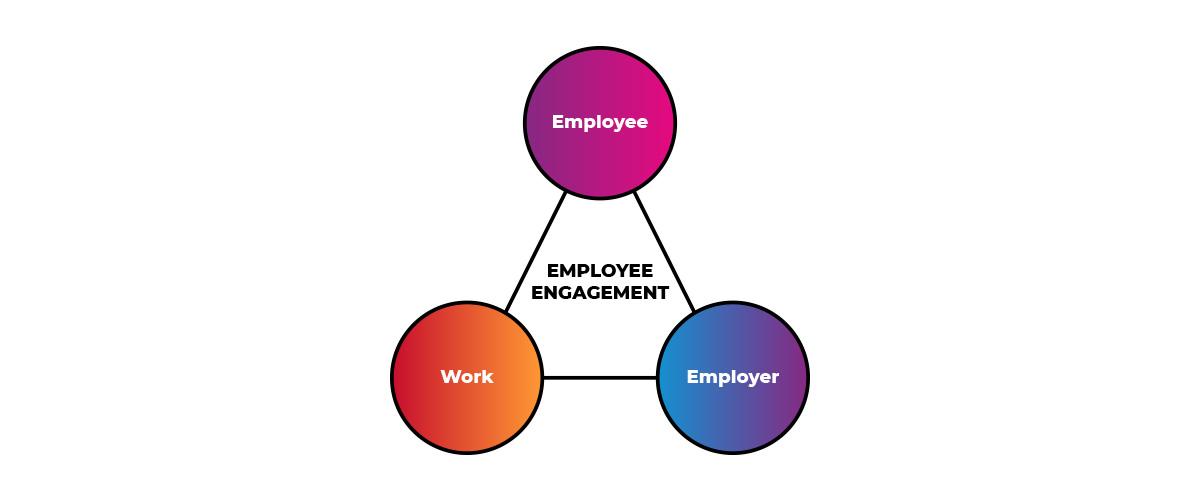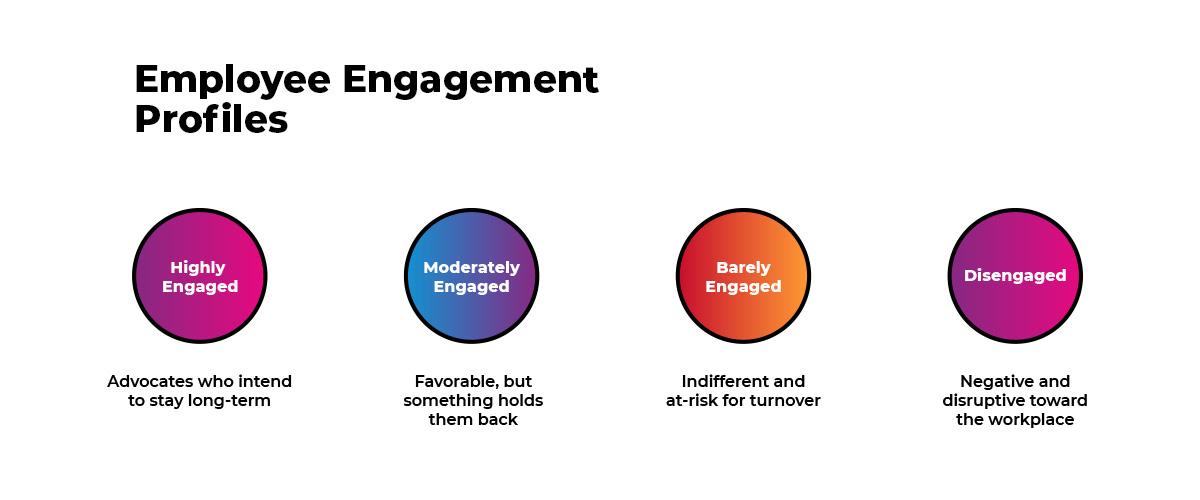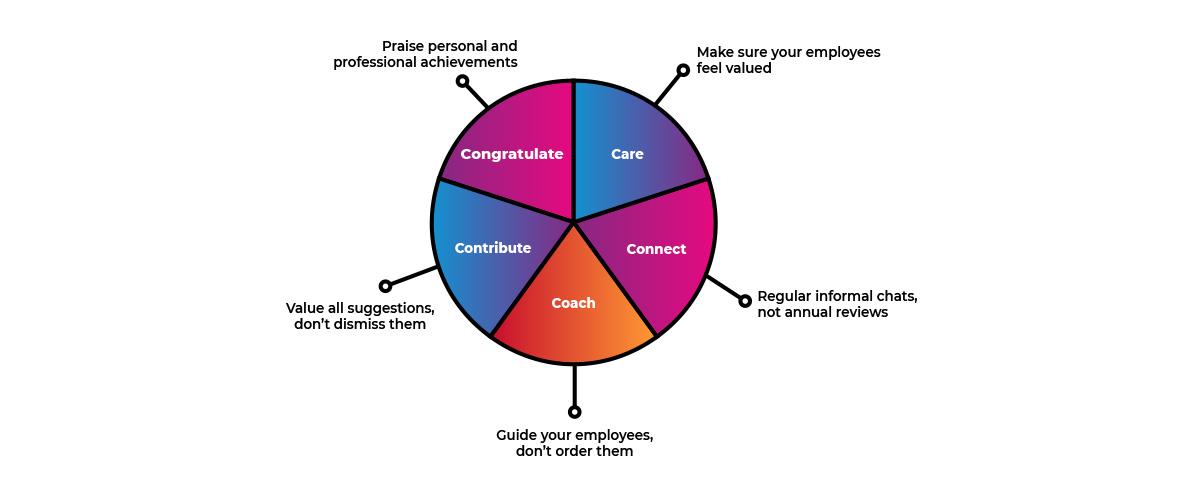What is employee engagement in hr?
Employee engagement is crucial for any long-term business strategy. Your actions as an employer significantly influence it, and it profoundly affects your employees in turn.
Essentially, employee engagement measures how enthusiastic employees are about working for your organization and the effort they consequently invest. It involves feeling like a valued and appreciated team member and contributing to the company's development.
Engaged employees often exceed their job descriptions, significantly benefiting the organization.

What employee engagement is not
Employee engagement is distinct from motivation, wellbeing, happiness, or satisfaction. A highly motivated employee may not necessarily be engaged. While high rates of these factors often correlate with engagement, it's not automatic.
Engagement represents a deep, long-term connection to the organization, unlike the short-term nature of employee happiness. For instance, a raise might temporarily please a disengaged employee, but it won't sustain their engagement.
Satisfied employees might do their jobs without seeking to excel further. Employee wellbeing, covering various life aspects, significantly impacts engagement, but they are separate concepts, much like employee experience.
Why is employee engagement important?
Engaged employees perform better; it's that simple. They become 'brand advocates,' promoting the organization positively to others and potentially opening new recruitment channels through referrals.
They also encourage their peers to improve, creating a positive cycle of increasing engagement. Conversely, disengaged employees can disrupt the workplace, spreading their negative views.
Jeanette Wheeler, Chief HR Officer at MHR, notes, "Engaged employees are fundamental to an effective business, leading to immediate benefits like better retention and easier recruitment. In the long term, high employee engagement yields incredible advantages, strengthening and making the business more resilient and profitable."
What are the different levels of employee engagement?

- Highly Engaged: Employees feel connected with their work's impact, which naturally enhances performance, reduces absenteeism and improves retention.
- Moderately engaged: Employees like the company they work for, but they don’t love it. There are key areas they can improve in. They’re less likely to take on extra work, and they may underperform.
- Barely engaged: Employees are completely indifferent to their work. They’re a very high staff-turnover risk and will only do the bare minimum.
- Disengaged: Engagement levels range from highly engaged employees, who are fully committed and go the extra mile, to disengaged employees, who have a negative view of the workplace and can negatively influence their colleagues.
What are the different types of employee engagement?
- Mental Engagement: Alignment with the company's mission and confidence in one's role.
- Emotional Engagement: The emotional connection, where secure and trusted employees are more engaged.
- Physical Engagement: The investment of physical and mental energy in work.
What are the characteristics of employee engagement?
There are numerous ways to gauge employee engagement, but certain key traits are indicative of a highly engaged employee:
- They excel in communication and are cooperative colleagues.
- They display enthusiasm for their work.
- They show interest in opportunities for growth, such as training programs.
- They are adaptable and can handle new challenges effectively.
- They manage stress well.
- They are willing to take on additional responsibilities.
- They are innovative and continuously strive for improvement.
The 5C's of employee engagement
To cultivate employee engagement, consider these five essential elements:
Care: Ensure employees feel their contributions are recognized and valued.
Connect: Favor regular, informal conversations over formal annual reviews.
Coach: Mentor your employees rather than giving orders.
Contribute: Embrace all suggestions and avoid dismissing them.
Congratulate: Celebrate both personal and professional accomplishments of employees.

Who is responsible for employee engagement?
Leadership
- Develop a comprehensive vision for effective employee engagement.
- Champion the cause of employee engagement
Human Resources
- Supply necessary tools and processes.
- Offer support to managers.
Managers
- Establish communication channels with employees.
- Listen to employees and make them feel appreciated.
- Give feedback on employee performance.
- Offer opportunities for growth and development.
Employees
- Participate honestly in feedback sessions.
- Take initiative for their own development.
- Foster relationships with other team members.
How to measure employee engagement?
Employee engagement surveys are a popular tool for measuring engagement, with several distinct types available. Understanding the differences can help you choose the best fit for your organization:
Traditional Surveys: Comprehensive and usually annual, these surveys cover a broad range of topics.
Pulse Surveys: These are shorter and designed for quick feedback, ideal during times of significant change.
Exit Surveys: Extremely valuable as employees may be most candid when leaving, providing insights into issues that could lead to turnover.
Ensure your survey questions are directly related to engagement. Additionally, encourage managers to conduct regular check-ins, creating an environment where employees feel comfortable sharing their thoughts openly.
How to build a motivated workforce
There's no single solution for enhancing employee engagement, but certain strategies have been proven effective across various industries. The specific focus areas, however, should be tailored to your business model and needs.
Communication is fundamental to employee engagement. Ensure that team members engage in productive conversations and that managers maintain open lines of communication.
Establishing a robust feedback culture, where employee feedback is promptly addressed, is crucial. Even if the response is to explain why an idea isn't feasible, it's important that employees feel heard and valued. Offering development opportunities, aligning employees with company values, and recognizing their achievements are also key to boosting engagement.
Leadership buy-in is essential, as the engagement strategy should be supported from the top down.
For more insights on employee engagement, consider downloading our employee experience report.



